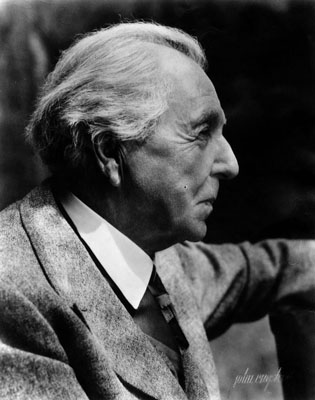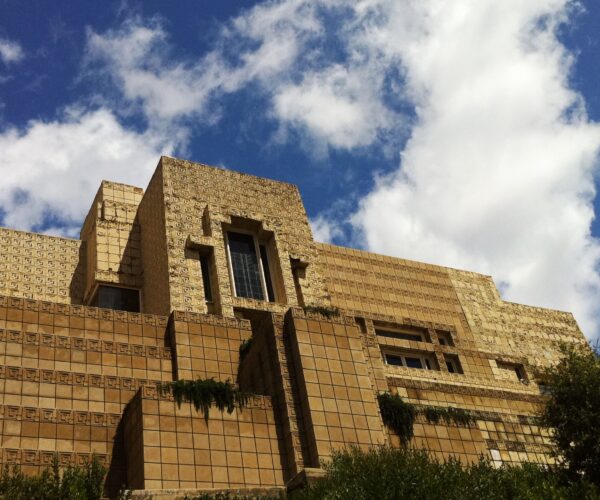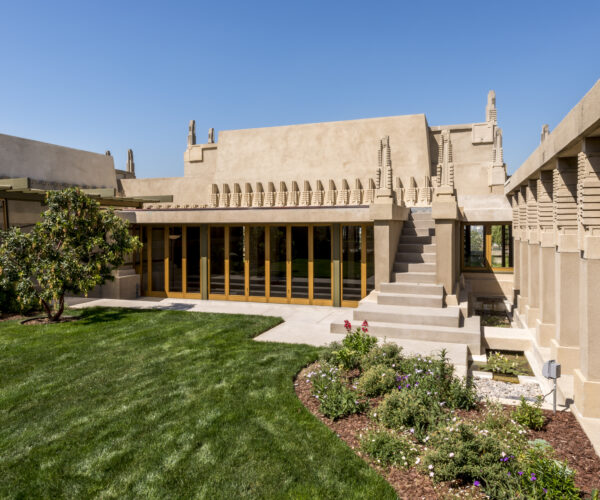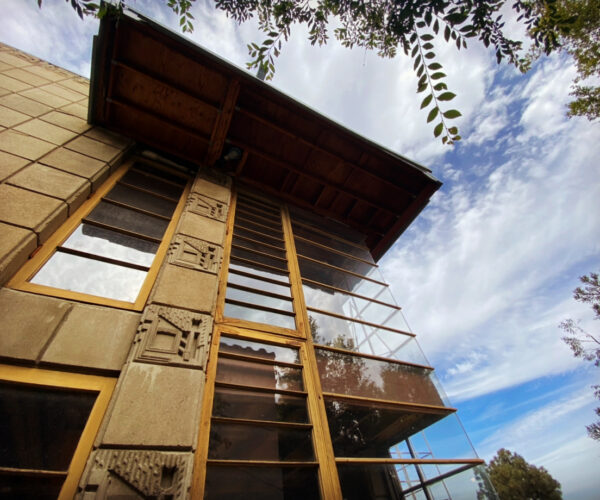Architect
Frank Lloyd Wright
One of the most legendary figures in American architecture.
Credited with helping to shape the country’s architectural identity, Frank Lloyd Wright is a giant of American architecture.

Frank Lloyd Wright, Herald-Examiner Collection/Los Angeles Public Library | Herald-Examiner Collection/Los Angeles Public Library
Overview
Frank Lloyd Wright entered the world of architecture in an era when most American structures were fashioned after European models, a practice he firmly rejected.
Known for coining the term organic architecture, Wright based his work on the harmonious relationship between the structure, occupant, and the natural landscape. He created one of the most enduring design legacies in the United States and some of the most iconic structures in the world, from the Robie House and Fallingwater to the Guggenheim Museum.
Inspired by the flat plains of the Midwest, Wright’s Prairie style was uniquely American and essentially the seed for Modern architecture. It featured horizontal lines, open floor plans, cantilevered roofs, clerestory windows, unfinished materials, and the integration of interior and exterior environments.
Wright brought his gifts to Los Angeles in 1919 with Hollyhock House, the centerpiece of heiress Aline Barnsdall’s vision for an arts colony. A loose take on Mayan Revival architecture, Hollyhock is a showpiece of concrete patterned blocks and presaged Wright’s four “textile block“ homes in Los Angeles: the Millard, Freeman, Storer, and Ennis residences.
Wright died in 1959. He never joined the American Institute of Architects but received the AIA Gold Medal in 1949. In 1991, the AIA recognized Wright as the “greatest American architect of all time.
Early Years
He was born Frank Lincoln Wright in 1867 in Richland Center, Wisconsin. His parents divorced when he was 18, and he soon thereafter changed “Lincoln” to “Lloyd” in honor of his mother’s family, the Lloyd Joneses.
Wright never graduated from high school. With special permission, he was admitted to the University of Wisconsin’s Engineering School but left after two semesters.
Without a formal degree, he moved to Chicago where work was plentiful due to the building boom caused by the city’s Great Fire in 1871. Wright began his career working as a draftsman for the firm of Joseph Lyman Silsbee. In 1888, he was hired by the firm of Adler & Sullivan, where he was mentored by legendary architect Louis Sullivan. In classic Wright fashion, he had a bitter falling out with Sullivan and left the firm in 1893. Wright started his own practice in Chicago that same year.
Style & Legacy
Inspired by the flat plains of the Midwest, Wright’s Prairie style was uniquely American and essentially the seed for Modern architecture. It featured horizontal lines, open floor plans, cantilevered roofs, clerestory windows, unfinished materials, and the integration of interior and exterior environments.
Wright brought his gifts to Los Angeles in 1919 with Hollyhock House, the centerpiece of heiress Aline Barnsdall’s vision for an arts colony. A loose take on Mayan Revival architecture, Hollyhock is a showpiece of concrete patterned blocks and presaged Wright’s four “textile block“ homes in Los Angeles: the Millard, Freeman, Storer, and Ennis residences.
Wright died in 1959. He never joined the American Institute of Architects but received the AIA Gold Medal in 1949. In 1991, the AIA recognized Wright as the “greatest American architect of all time.”
Related Places
-

Place
Ennis House
-

Place
Hollyhock House
-

Place
Harriet and Samuel Freeman House